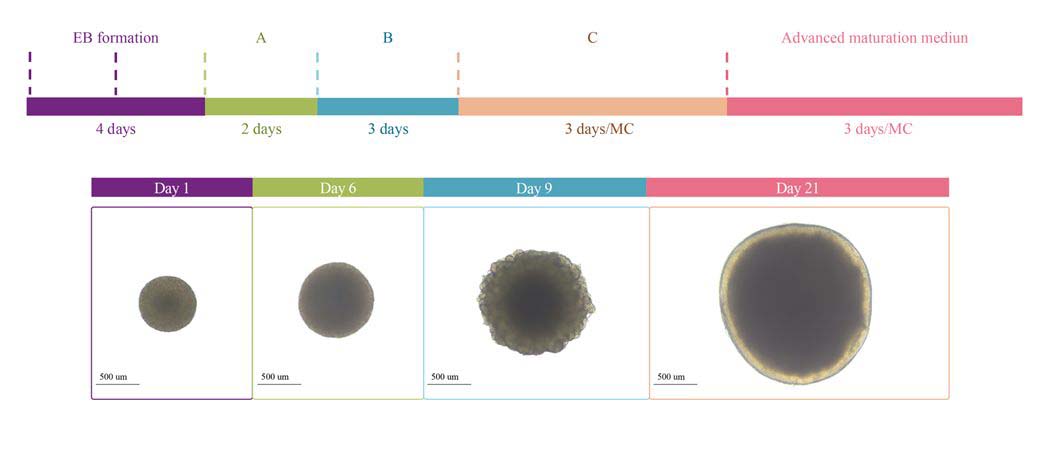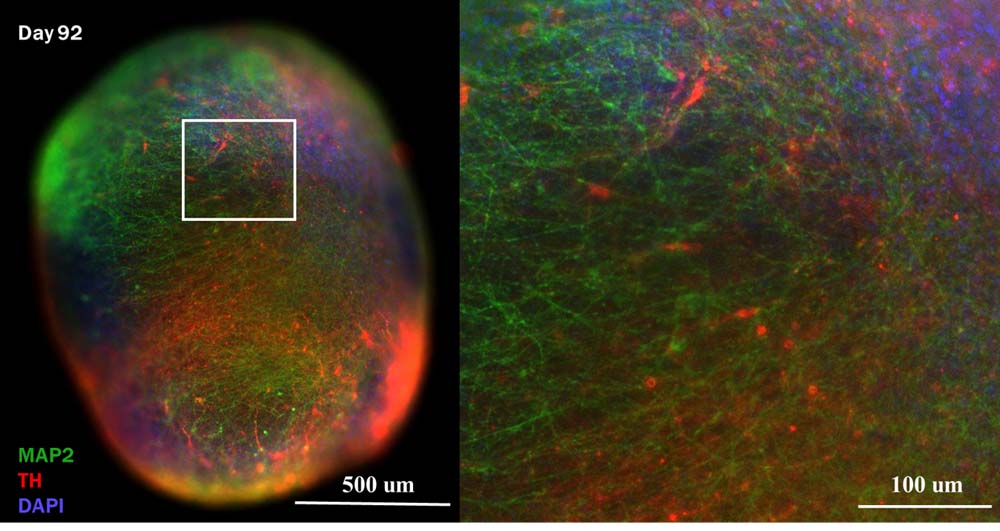产品描述(Product Details)
Human iPSC-derived cerebral organoids are differentiated from hESCs or iPSCs using the Human iPSC-Derived Cerebral Organoid Differentiation Kit (Cat. No. RIPO-BWM001K). As three-dimensional in vitro models, cerebral organoid effectively replicate the cellular composition and structural organization of human cerebral cortex layers I to VI. Cerebral organoids primarily express glutamatergic, GABAergic, and dopaminergic neurons within 100 days of differentiation. Typically, they begin to exhibit weak spontaneous electrophysiological activity around day 60 and develop increasingly complex neural networks over time. Cerebral organoids are highly valuable for modeling neurodegenerative processes, including responses to PFF-induced toxicity and can be used in the study of Parkinson’s and Alzheimer’s disease. These cerebral organoids are provided under 100 days and shipped in the shipping medium.
产品特征(Product Specification)
The live organoids are ready-to-use organoids that are delivered in shipping medium and has to go through a recovery period according to instruction before starting any test or experiment.
存储(Storage)
After recovery, please store the organoid in its maintenance medium under the correct incubation condition and medium changing process.
产品示意(Product Diagram)

Protocol Diagram of cerebral organoid differentiation.
验证数据(Validation Data)
Orgnaoid Histology

Left: Early-stage cerebral organoid show rosette-like structures (neural stem cells), which become smaller as organoids develop.
Right: Day 109 cerebral organoids show uniform morphology and show no dead core inside.
Marker Expression

Presence of TH and MAP2 positive neurons in day 92 cerebral organoid.
TH: used as cell marker of dopaminergic neurons.
MAP2: mature neuron cell marker.

Left: Presence of GFAP positive cells at day 109 cultured cerebral organoid.
Right: Presence of OLIG2 positive cells at day 119 cultured cerebral organoid.
GFAP: marker for astrocyte.
OLIG2: marker for oligodendrocyte.

Presence of TH and IBA1 positive cell in day 147 cultured cerebral organoid.
IBA1: cell marker for microglia.
Organoid Activity

A: patch-clamp recording of excitatory neurons dissociated from cerebral organoids at day 102. Excitatory neuron show stable response to step injection currents.
B: Recording of cerebral organoid (day 60) using silicon probe. Neurons that show spontaneous activities have different waveforms.
C: MEA recording of cerebral organoid (day 86), spontaneous activities and bursting activities are recorded.
Organoid Application

Using cerebral organoids for modelling Parkinson's Disease. Cerebral organoids are treated with Human Alpha-Synuclein Pre-formed Fibrils Protein. Dopaminergic neurons and MAP2 positive neurons are damaged with both 0.1 μM and 1 μM Alpha-Synuclein Pre-formed Fibrils.

AAVs selection using cerebral organoids: Different capsid of AAVs were incubated with cerebral organoids. As the results, different affinities of each AAV to the cerebral organoid were observed.























































 膜杰作
膜杰作 Star Staining
Star Staining











